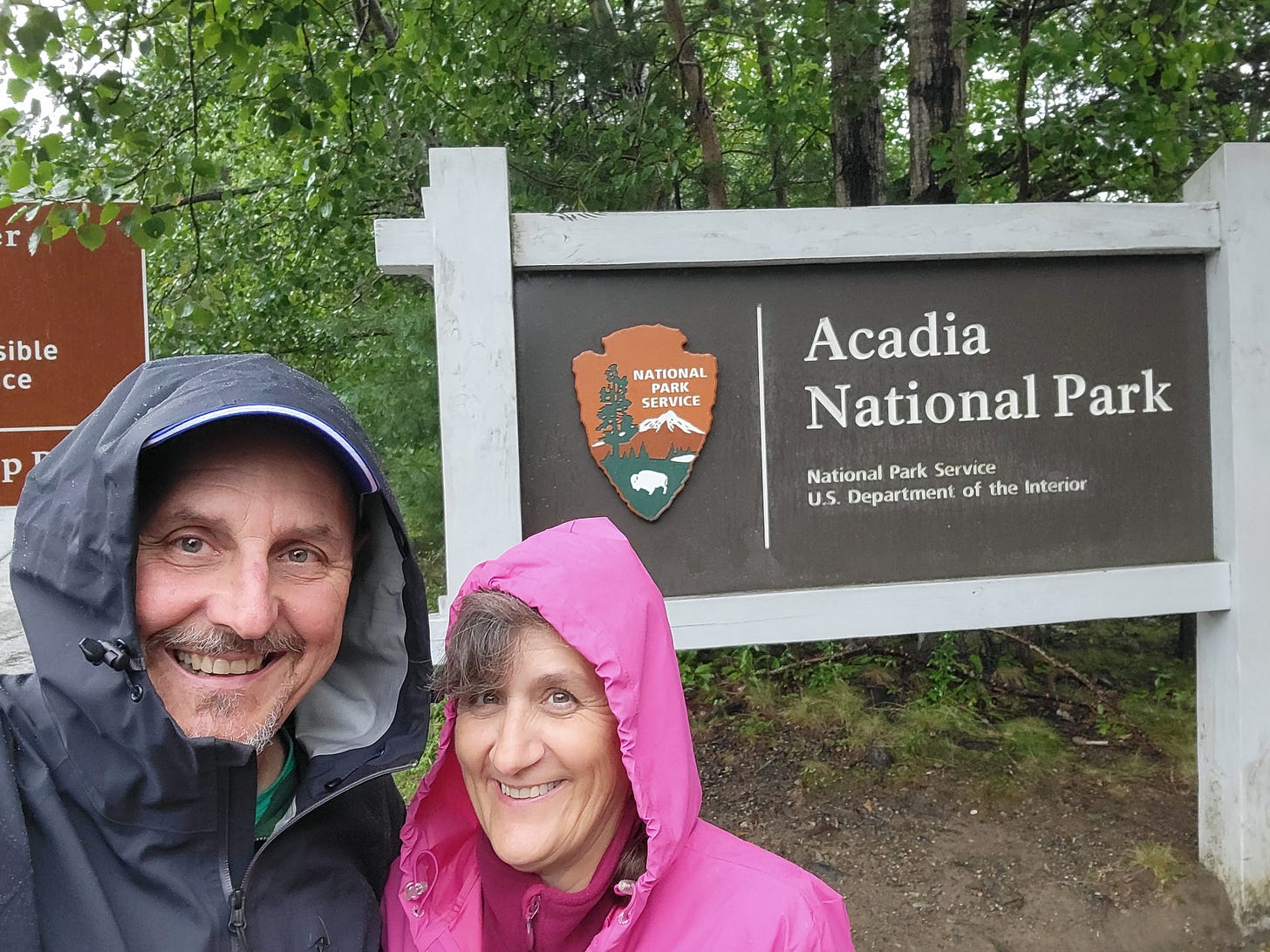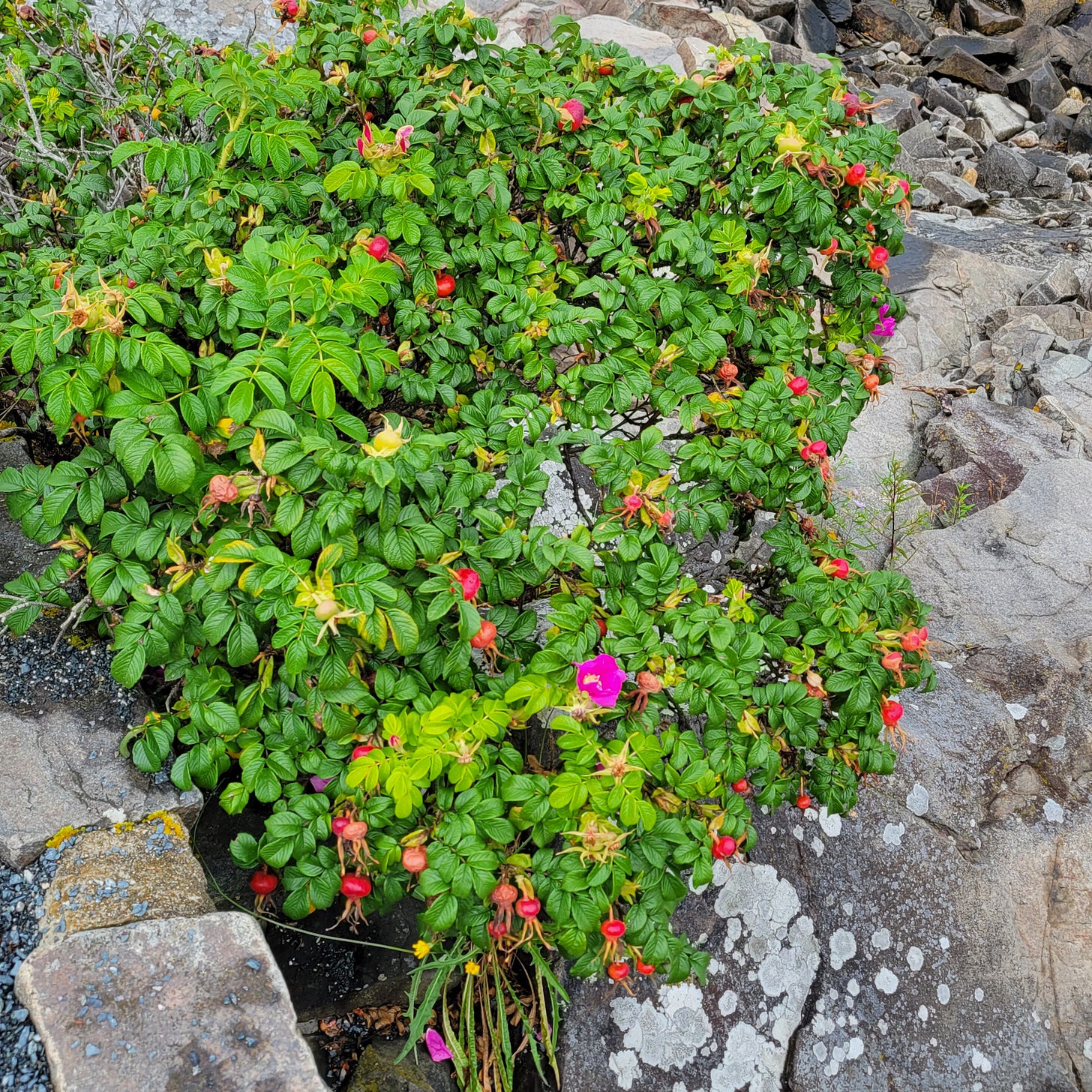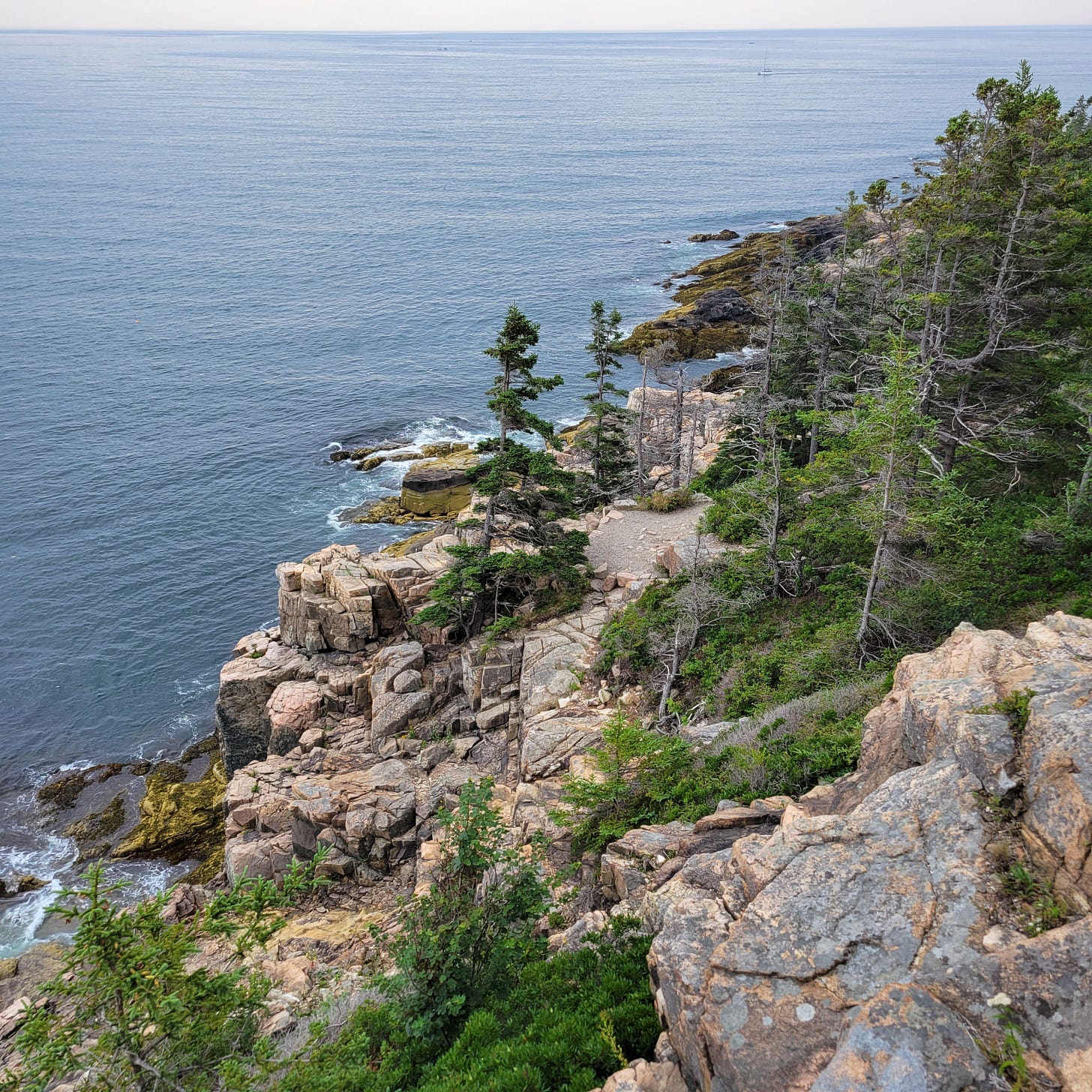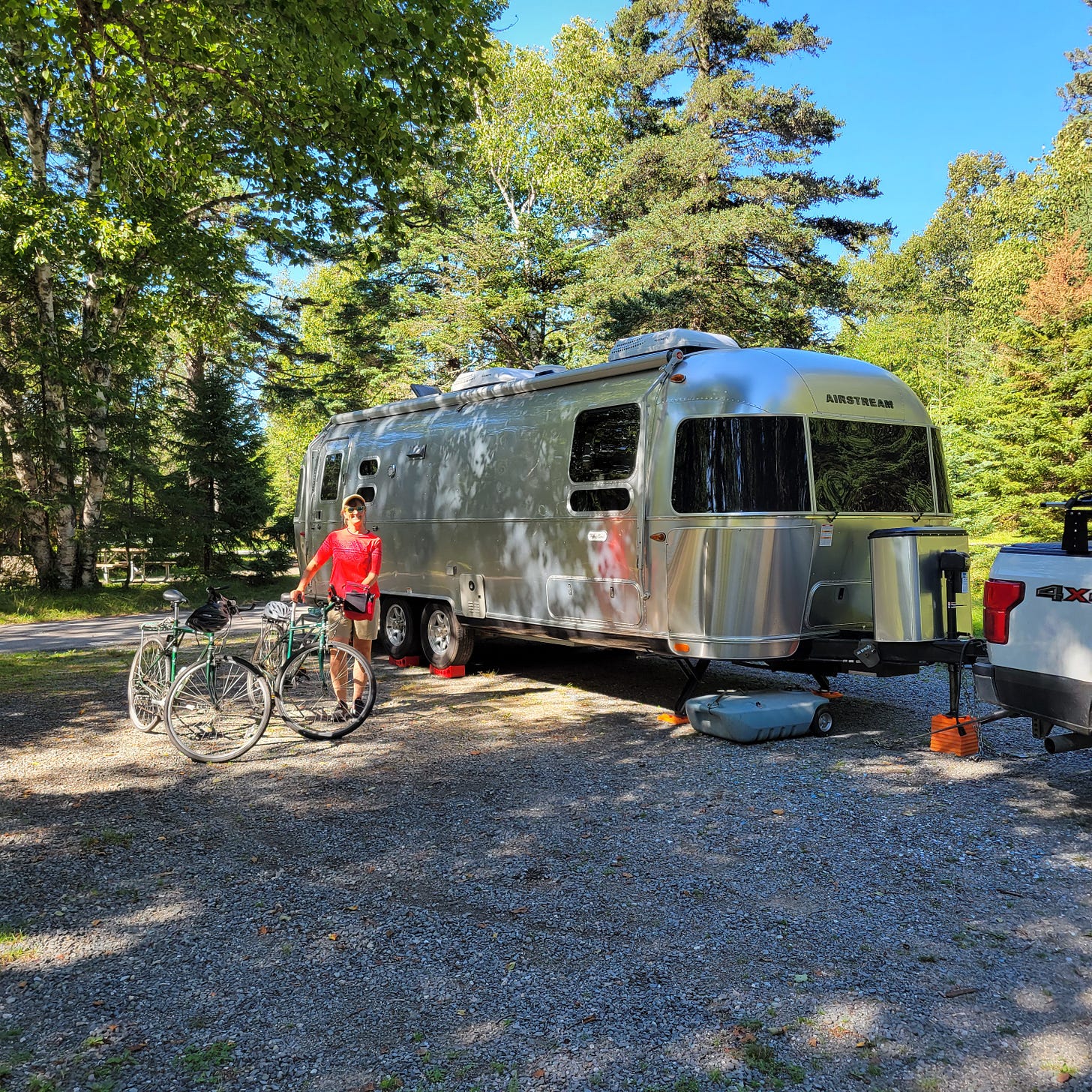Final thoughts on Acadia National Park
No trip of ours would be complete without a picture alongside the park’s entrance sign. We were remiss in taking one when we entered the park at the beginning of the week, and every day seemed to miss the opportunity. So on our final night there, after dinner and in a steady rain, we traipsed over to the entrance to snap this happy pic.
And, no trip would be complete without looking for bees. I’m always on the lookout for bees. Here’s what looks to be some sort of native bumblebee, maybe a red-tailed bumblebee; it’s definitely not a honey bee.
The bee was on these beach rose plants, which are beautiful and found everywhere around the island.
For the history buffs in the audience: We stumbled upon an apparent mystery when reading the history of the founding of Acadia National Park. The NPS website tells us that the park was founded in 1919 as Lafayette National Park. Then ten years later, in 1929, the park was renamed as Acadia National Park. But no explanation was given. Since Nancy is a Lafayette College alum, our curiosity was picqued. We asked park rangers, and we asked at the Bar Harbor Historical Society, but no one seemed to know. Well, a little internet sleuthing uncovered this article, which gives the likely back-story … it was the French-snubbing heiresses, Ruth Moore, who gave Acadia National Park its new name, along with a donation of several thousand acres on and around the nearby Schoodic Peninsula.
Acadia National Park is a beautiful place, so unique in its melding of the sea, a shoreline, and a northern forest.
The Airstream performed superbly. We were “off-grid”, boondocking most of the time. Towing it there (500+ miles) and back via a route thru Canada (another 500+ miles) was easy and uneventful. Here we are set up in the Seawall Campground, and then in the Blackwoods Campground, both within the National Park.
Stay tuned for our next National Park adventure!








